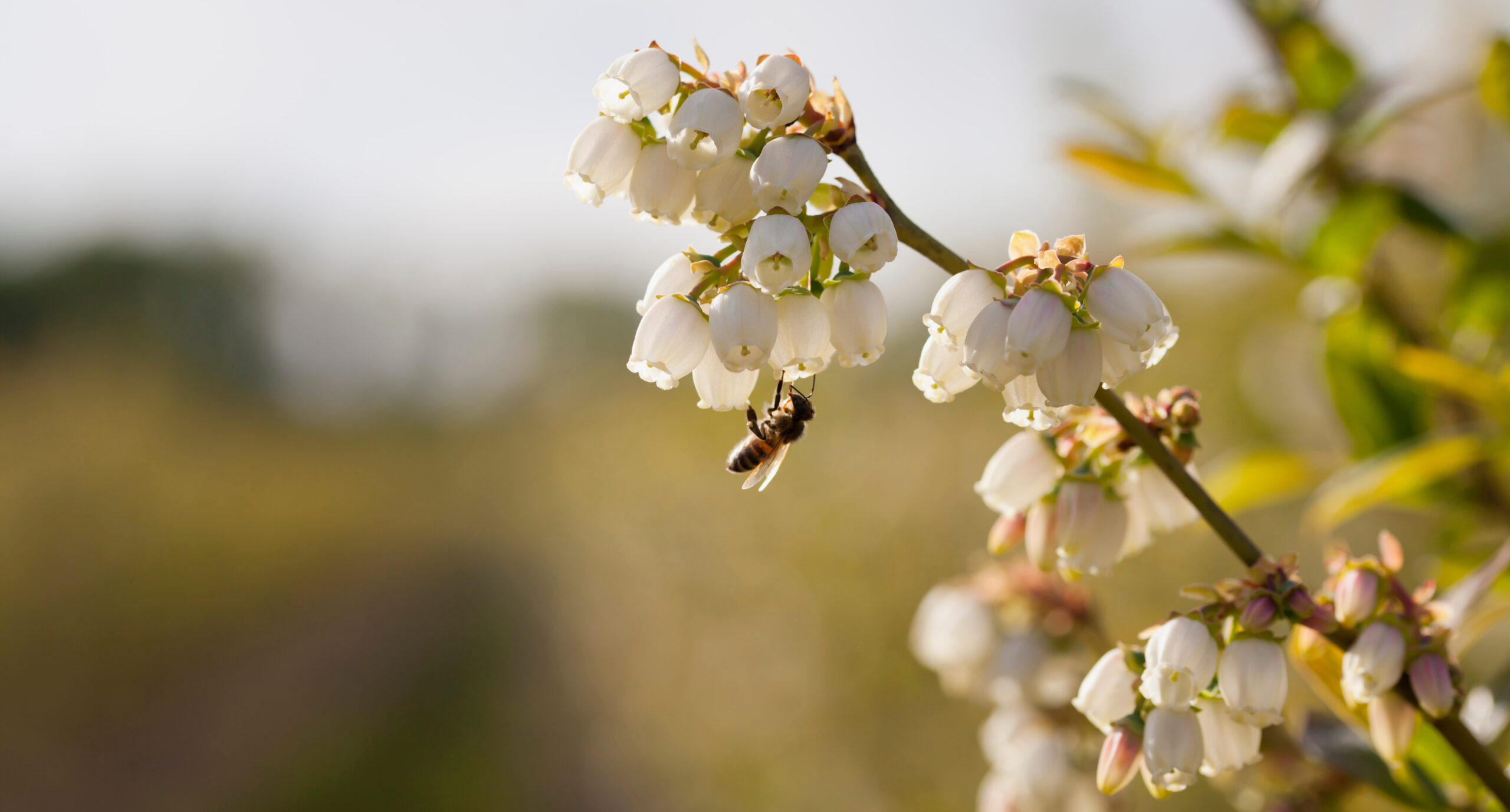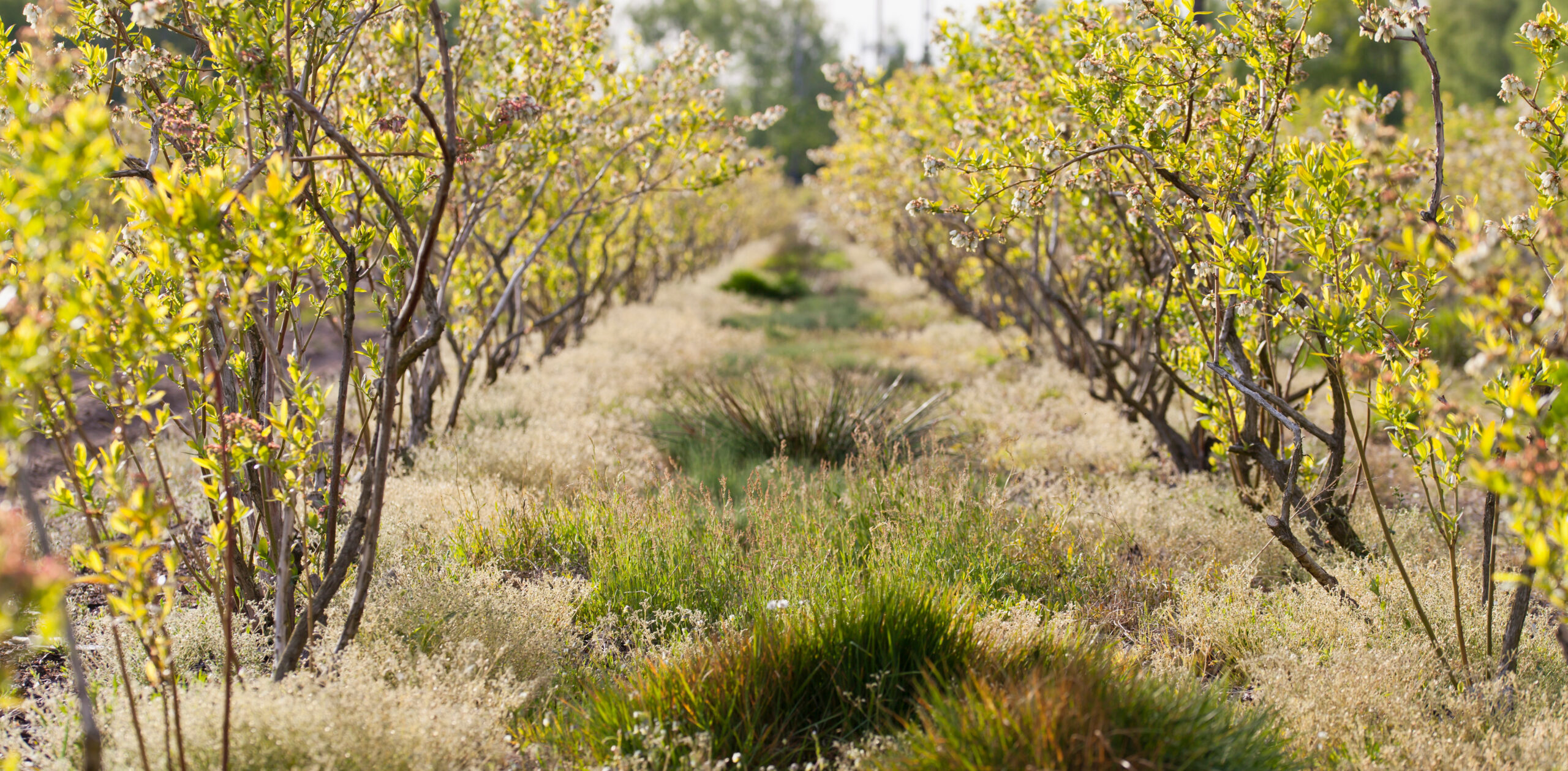 by Jose Antonio Babiano
by Jose Antonio Babiano This new case study from Spain has been kindly submitted by Jose Antonio Babiano, DVM, for the Montemiel Cooperative. He investigated a case of colony collapse in a 900-hive operation that was moved to several crops during the 2023 season.
Several suspects were considered, including European foulbrood and varroa mites, but nutrition turned out to be the cornerstone of the situation. If you are used to moving your beehives to monofloral crops, this new case should spark your interest.
Since we are discussing malnutrition related to blueberry pollination in this article, we also asked Dr. Gordon Wardell, an American specialist in bee nutrition who wrote a PhD dissertation on the link between blueberry pollination and European foulbrood, to add some additional comments on this article.
A beekeeper from Extremadura (Fuenlabrada de los Montes, Badajoz) operates a professional migratory beekeeping business with 900 hives (Apis mellifera iberiensis). He uses Layens-type hives with mixed zootechnical classification. In the summer of 2023 (July), he was called to set up several colonies in blueberry crops in the Western Coast region of Huelva (Andalusia). These colonies were specifically placed in the municipalities of Moguer, Cartaya, Lepe, Gibraleón, etc., for pollination services.
These colonies migrated through several locations during the 2023 season, passing through blooms of rockrose, lavender, rosemary, and meadow flora, followed by the sunflower bloom in Seville (June), and then were moved to the afore mentioned blueberry crops.
The harvests obtained were poor due to the lack of rain and extreme heat during the summer, with a very low spring replacement/multiplication rate due to the adverse weather and significant pressure from bee-eaters during queen fertilization periods.
These colonies did not receive supplementary nutrition from spring (March/April) onwards and were treated for varroa mites with amitraz-based strips (registered vet medicine) in October 2023 (once settled in the blueberry crop sites).
In the last decade, the cultivation of blueberries (Vaccinium myrtillus L.) in the referenced area has exploded, even displacing more traditional crops like strawberries and raspberries. Despite being a hermaphroditic flower, the blueberry flower has spatial limitations for self-pollination, thus requiring entomophilous pollination. The honey bee (6-10 colonies per hectare), along with the common bumblebee (Bombus terrestris), are the most commonly used species for this task, resulting in yield increases of up to 40%, larger fruits, better fruit quality, and earlier berry maturation.

Early blueberry blooms begin in August, increasing until October when they peak. During this period, the bee colonies experience exponential growth (especially in brood frames, 7-9 frames per colony), unusual for the time and given the adverse weather conditions typically occurring by mid-autumn.
From that moment, a gradual decline of the hive begins, with a significant impact on the brood and a gradual loss of individuals, leading to the total collapse and death of most colonies installed.
The bee hives are in an adequate state of conservation with no dead bees observed inside or around the flight board. The entry-exit of colony members is untimely, the honey reserve level is adequate/high, and the population is very reduced, with all colonies affected to a greater or lesser extent. The brood shows mosaic patterns with primarily non-capped brood affected, giving off a slightly sour odor. The brood is in abnormal positions, neither viscous nor filamentous, and not adhering to the cell (totally symptomatically compatible with European foulbrood).
Varroa tests with powdered sugar and uncapping of brood did not show a significant infestation level or symptoms compatible with varroosis.
Monochromatic pollen presence was observed in the brood frames. Samples of bees, brood, and pollen were taken for study and analysis based on the observed symptoms and diagnostic suspicions.
After several interviews with local beekeepers and others who also moved hives to blueberry crops, the following information was obtained:
EUROPEAN FOULBROOD
The symptoms and analysis confirm positivity for this pathology. However, there are enough bibliographic references where this condition is considered secondary to predisposing and triggering factors, making it unlikely to be the primary and sole cause of the process.
For instance, Melissococcus plutonius, the bacterial agent causing European foulbrood, demonstrates a broad range of virulence, with low virulence strains typically acting as social symbionts and becoming opportunistic only when the host is stressed (Anderson et al. 2023). Additionally, the presence of bacteriocins in M. plutonius indicates competition with the native microbiome, particularly the larval gut microbiome during EFB outbreaks (Forsgren 2010).
Furthermore, the significant relationship between symptomology and molecular results reveals that European foulbrood often coexists with other conditions such as parasitic mite syndrome (Varroosis) and acute bee paralysis virus (ABPV), which can exacerbate the disease state (Milbrath & al. 2021).
—
Dr Gordon Wardell: “European Foulbrood (EFB) is a stress related disease. Stresses include nutritional, environmental, including pesticide and fungicide exposure. Blueberry pollination exposes the bees to a number of stresses. Beekeepers can not mitigate some of the stresses but they can reduce nutritional stress with supplemental feeding. My research showed that the pollen collected during blueberry pollination would buffer the larval gut up toward a more neutral pH (in the range of pH 6 or higher).
The bacteria Melisococcus pluton (previously Streptococcus pluton) thrives at a higher pH but does not reproduce well at lower pH (4.0 to 4.5). When beekeepers move their bees to clover and alfalfa after blueberry, the disease would stop. Those pollens are relatively acidic 4.0 to 4.4 Ph. In my research, when I acidified a supplemental diet the disease bacteria would not proliferate. The bacterium that is associated with the disease does not proliferate well in low pH diets so a diet like MegaBee® (pH balanced protein supplement containing all the amino acids – It is designed to have a ph of approximately 4.2 to promote good gut health) would help reduce the nutritional stress.”
—
PESTICIDE INTOXICATION
Blueberry cultivation is under the pressure of a large array of pests (aphids, thrips, mealybugs…), and despite published data indicating that more than 50% of blueberry producers in Huelva already use biological control, synthetic insecticides are still used for control, with a wide range of active ingredients (Bifenthrin, Difenoconazole, Flupyradifurone, Spinetoram, Spinosad, etc.), some specifically for blueberries and others for other crops in the area like raspberries.
These insecticides can logically affect bee colonies; however, the absence of dead bees, the peculiarities of the process, and the lack of detection of significant levels in sampled bees and pollen after searching for the most widely used commercial products in the area raise serious doubts that intoxication is the sole cause of the process, although it may contribute to its magnification.
—
CLIMATIC/NUTRITIONAL PROBLEM
After the pollen analysis of the sampled pollen, it was observed that 90-100% comes from blueberry crops. It is known that certain pollens lack essential amino acids for bees (isoleucine in the case of eucalyptus pollen, tryptophan in sunflower pollen, etc.) (Jeannerod et al. 2022), with references indicating that pollen from certain Ericaceae (Weiner et al. 2010) does not contain the complete amino acid profile that bees need to ensure their viability and longevity.
Nutritional deficiencies favor the emergence of certain pathologies like European foulbrood (Floyd et al. 2020).
—
Dr Gordon Wardell: “Migratory beekeeping is stressful to the bees and the beekeeper. For the bees relocation stress means they have to find new food and water sources. Nutritional supplements can mitigate some of these nutritional stresses. Water available also helps reduce stress. In California Almond pollination growers routinely provide half barrels of water with burlap for the bees to crawl on. This means fewer bees have to fly long distances for water and more bees can focus on the pollination. The growers willingly provide this service because they realize it will result in better pollination.”

The analytical results obtained are clear, and the observed symptoms are distinct. An anamnesis was conducted with multiple beekeepers. Similar processes have already been documented in blueberry crops in Canada (Marta Guarna et al., 2018). When colonies were moved to other blooms, a gradual improvement was observed until the process disappeared without any medication. Consequently, the diagnosis of SEVERE PROTEIN NUTRITIONAL DEFICIENCY is established.
It is widely documented that the lack of diversity of natural plants in cultivated agricultural systems limits the availability of pollen and nectar for bees. This causes nutritional stress that has a direct impact in the medium and long term on both the behavior and the physiology and development of bees and their brood. It affects the lifespan of honeybees, their immunocompetence, and their resistance to pathogens and agrochemicals (Wu et al. 2018; Valido et al. 2019; Brodschneider et al. 2010).
Monovarietal pollens or those of low biological value do not provide the necessary amino acids to meet the colony’s needs. This particularly affects the brood, which, being fed the same pollen in a short period, does not develop optimally. The result is short-lived bees with diminished capabilities, making them more susceptible to pathologies like European foulbrood and compromising their resistance to agrochemicals (Weiner et al. 2010; Roulston et al. 2010; Bryś et al. 2021).
The described process has led most beekeepers who moved their colonies to pollinate blueberry crops in the indicated dates and areas to decline doing so in future campaigns.
 by Juan Molina
by Juan Molina  by Juan Molina
by Juan Molina Join the Véto-pharma community and receive our quarterly newsletter as well as our occasional beekeeping news. You can unsubscribe at any time if our content does not suit you, and your data will never be transferred to a third party!

© 2019-2024, Véto-pharma. All rights reserved